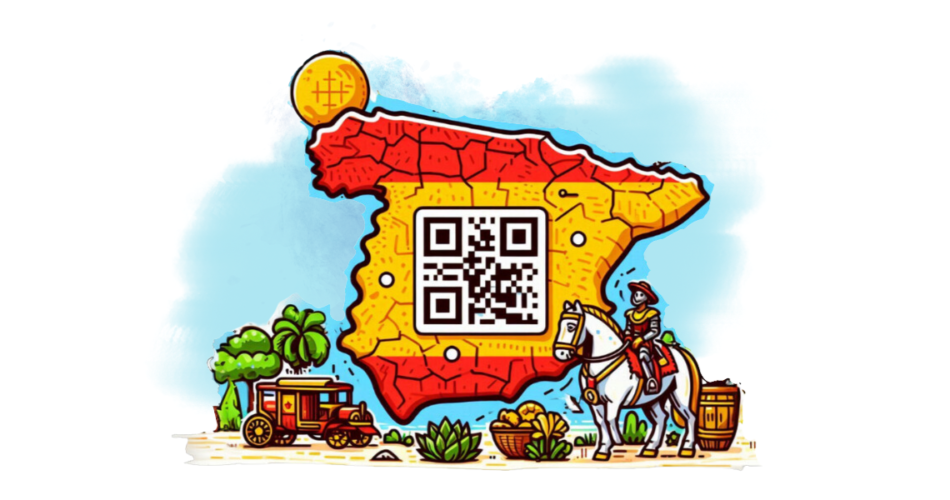QR Codes have become important in our lives. Starting from restaurant menus to marketing campaigns, their usage has gone sky-high in the world, and Spain isn’t an exception either.
This article focuses on the increasing use of QR Codes in Spain, going through their popularity, current statistics, and real-life examples of how they affect daily life.
Let’s get started!
A. The rise of QR Codes in Spain
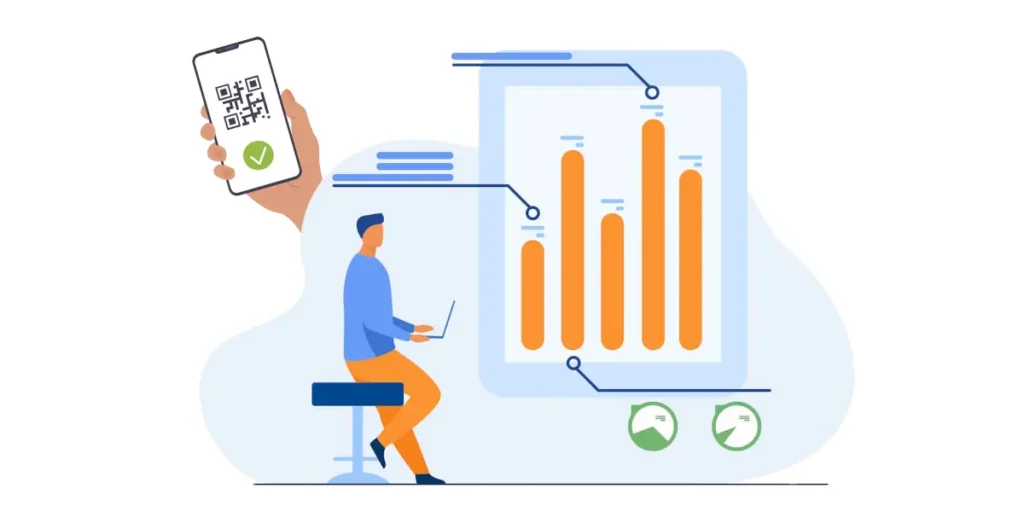
QR Codes have grown exponentially throughout Spain from the pandemic to the need for contactless solutions.
Many industries inside the country have become dependent on these versatile codes. Statistics from the end of 2020 to the middle of 2023 have shown that, in Spain alone, usage of QR Codes went upwards by over 65%.
Their uses are popular in many sectors, such as hospitality, retail, healthcare, and transport. A key driver for this surge comes through the wide usage of smartphones.
With over 91% ownership among Spaniards, the QR Code acts like a bridge between the physical and digital worlds.
Scanning with a mobile device became an easy thing to do, and hence, it came out to be an awesome tool for businesses and people.
B. Current usage of QR Codes in Spain
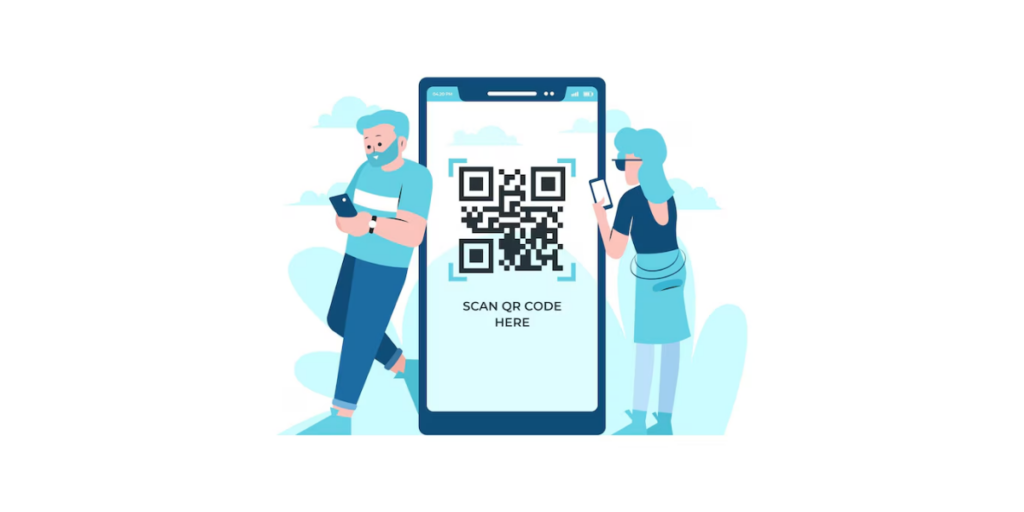
1. Restaurants and cafes
This industry was one of the very first to adopt the QR Codes in Spain. Today, more than 70% of restaurants and cafes in Spain have QR Codes for digital menus.
It was started initially because of the need to minimize contact and avoid virus spreading during the pandemic. Still, the convenience it brought to digital menus has kept the change here and there.
In Spain alone, QR Code scanners increased 9%, bringing the total to 16%. That made the European market the second biggest industry in both technology and QR Code scans.
2. Retail and E-commerce
QR Codes find wide applications in retail for promotional activities, product information, and modes of payment.
A recent survey found that 45% of Spanish consumers have scanned a QR Code when shopping in the last six months.
Today, even retailers make use of QR Codes to display special offers or discounts to capture customer attention.
El Corte Inglés, the giant department store chain in Spain, makes use of QR Codes in-store for immediate access to product information and discounts.
Another alternative that’s given to their consumers is to pay by using QR Codes, which saves a lot of time at the checkout.
As a first, the Congress of Spain has passed a bill on the technical specification that introduced the obligation of B2B e-invoices pre-cleared by the State Tax Agency, AEAT.
Major taxpayers must comply with the introduction of the invoice QR Code from 24 January 2024, with the obligation applying to all other enterprises from the start of 2026.
The government can publish technical specifications and regulations six months in advance.
This is part of increasing initiatives to promote business efficiency and reduce VAT fraud, with the VAT Gap estimating that Spain lost €6.8bn in expected VAT revenues.
Awesome, right?
3. Health
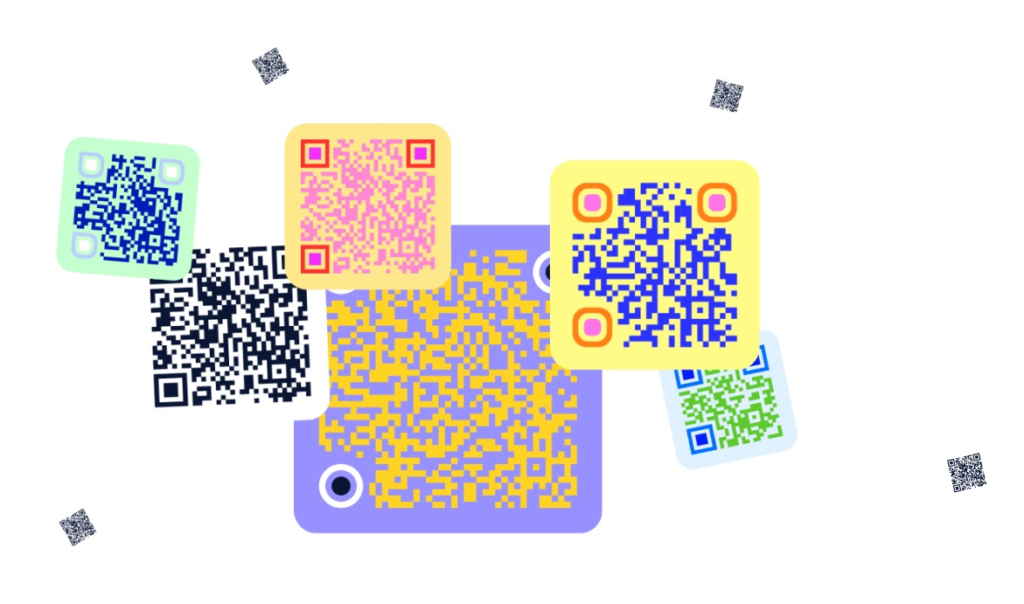
The healthcare industry is leveraging QR Codes in Spain to maintain patient data, schedule appointments, and obtain health records.
QR Codes on the prescription bottles similarly provide dosing instructions in detail, thereby enhancing patient safety.
In November 2023, The Ministry of Health, Spain, issued a note to suggest using QR Codes in the promotional materials destined for healthcare professionals, where technical data sheets should appear.
This addition of the QR Codes in the industry brought in many advantages, including:
- Making information more accessible and readable
- Reduction of unnecessary consumption of paper
- Assurance that information is up-to-date, which must be the information published by AEMPS
Also, it is relevant to underline the positive approach that Autocontrol, the entity responsible for advertising self-regulation in Spain, has used QR Codes to access medicinal products’ technical data sheets for improved management.
The Spain Travel Health or SpTH QR Code was part of the country’s COVID-19 health control measures at the arrival of all passengers.
It was basically an electronic health form for passengers before entering Spain, containing all the basic information related to their health, vaccination status, recent testing about COVID-19, and travel history.
Upon registering for the form online, the traveler was given a QR Code that also needed to be presented upon arrival at Spanish airports.
It allowed an immediate clearance of health information from the authorities so that the travelers met entry requirements and increased safety at border checkpoints.
4. Public transport
Most public transport systems are full of QR Codes in Spain. From purchasing tickets to route and schedule information, QR Codes smoothened the commuting experience for millions.
For example, in Madrid, users can get real-time information related to the arrival and departure of trains by scanning a QR Code.
Very recently, The General Directorate of Transport in Spain allowed the facilitation of the submission of administrative control documents through electronic formats.
This would mean drivers would not necessarily have to upload only the manual, paper-based CMR documents to the ministry’s portal during an inspection.
Instead, the authority has provided a QR Code with the digital transport document.
This new regulation seeks to simplify workflow by reducing the workload for both drivers and officers, as well as securing the accuracy of transport data during inspections.
How it works:
- When requested, your driver provides the transport document for inspection
- The driver presents the QR Code with the transport document to the officer of inspection
- The officer will then scan the QR Code using the application on his device
- This QR Code ensures that the transport document is uploaded safely for inspection to the Spanish authority.
The Spanish authority has also adopted, with TransFollow, the technology of QR Code scanning to ensure the security and interoperability of their new measure of QR Code.
Indeed, this technology can be integrated into many different TMS systems and matches all the requirements of this new inspection regulation.
Today, TransFollow facilitates the digital transition for transport by many shippers, carriers, and consignees.
The company has also supported digitalizing Spanish supply chains in the road transport sector.
In Barcelona, the city’s bus and metro services use QR Codes for ticketing. It enables passengers to buy a ticket or check the status of their journey by scanning the code.
It has helped make the journey smoother, free from the hassle of paper tickets, and fastened boarding.
On the other hand, the exciting initiative of the government through TMB Transport Metropolitans de Barcelona allowed QR Codes to help visually impaired and blind people get around in style.
QR Codes were attached to stickers and glued onto the walls of the various transit stations.
These codes, upon scanning, play audio messages that direct the visually impaired, making them more confident to use the transit system.
5. Tourism
Tourism is an important part of Spain’s economy. It has much to receive from QR Codes.
Broad information on monuments, museums, and historic sites is provided to visitors in several languages.
This technology enriches the experience of tourists and makes them more accessible to the rich history and culture of Spain.
Spain’s rich cultural heritage is being brought to life with the help of QR Codes. Museums and historical sites across the country use QR Codes to offer visitors additional information about exhibits and artifacts.
For instance, the famous Prado Museum in Madrid uses QR Codes to provide multilingual descriptions of its artworks. Visitors can scan the code to learn about the history and significance of the pieces they are viewing.
6. Marketing
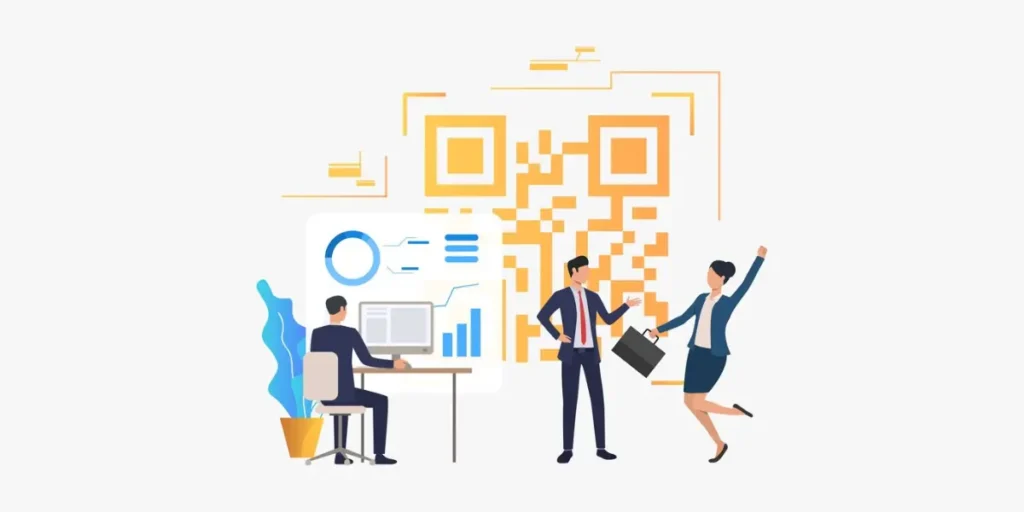
Coca-Cola has partnered with ScanLife, the company behind the BIDI mobile barcode service in Spain, to lead in mobile marketing and manage mobile barcodes.
These QR Codes, placed on Coca-Cola packaging, can be scanned with any QR Code reader app, like ScanLife (or Bidi in Spain).
Scanning the code directs users to exclusive content, such as UEFA’s EURO 2012 videos and Coca-Cola SmileWorld, the brand’s online community.
This partnership enhances Coca-Cola’s image as an innovative company, engaging directly with consumers through its product packaging. The campaign will also be featured in TV ads.
“The results we have seen are extremely impressive,” says Paco Rodriguez, Digital Manager at Coca-Cola.
“Thanks to intelligent QR Codes from the ScanLife platform, we are able to constantly surprise our consumers with new content, strengthen our position in the mobile space, and understand what interests our consumers.”
This has also allowed marketers to provide relevant content based on triggers like scan frequency.
7. Digital business cards
QR Codes are also gaining popularity in the corporate world as digital business cards.
Professionals in Spain use QR Codes to share their contact information seamlessly during networking events. This method not only reduces the need for physical cards but also allows for easy updates of contact details.
C. Benefits of QR Codes in Spain
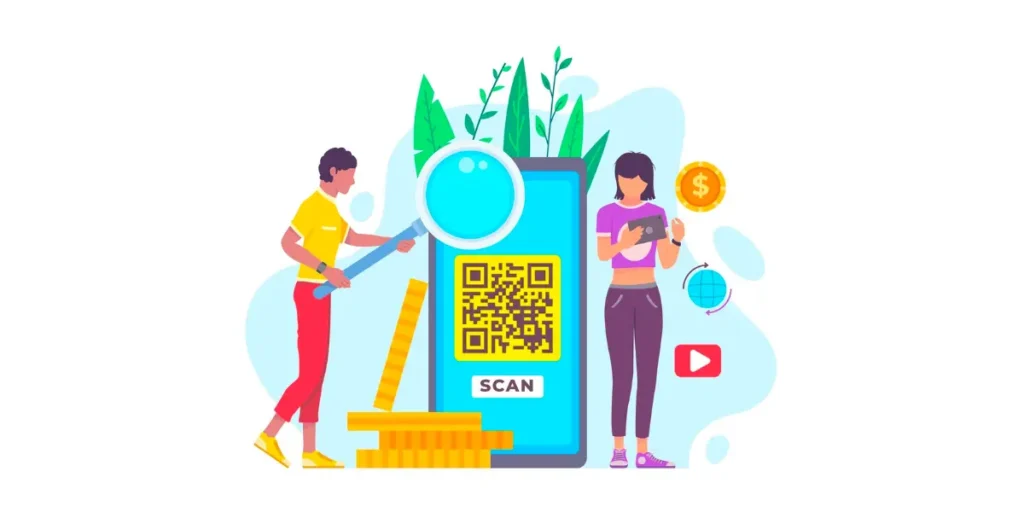
1. Improved customer experience
QR Codes allow users to access information in the blink of an eye without wasting time searching, improving customer experience.
It may be scanning the menu at a restaurant or details about the product displayed in the store; a QR Code brings convenience to each glance.
2. Cost-effective marketing
For businesses, QR Codes represent a low-cost marketing tool. Companies do not have to bear huge expenses in creating and distributing QR Codes
They can offer customers dynamic and interactive content with the help of this small thing.
3. Environment-friendly solution
The application of QR Codes leads to saving paper because digital menus, e-tickets, and virtual guides will now take their place.
Such efficiencies free up more time for businesses and their consumers.
4. Data collection and analytics
Businesses can monitor QR Code scans to gain rich data about customer behavior.
It is these kinds of insights that help companies make improvements in their service offerings and further strengthen their marketing efforts.
D. Challenges and future of QR Codes in Spain

While QR Codes have gained widespread acceptance, there are indeed a few challenges.
Some users are still very leery about scanning QR Codes, as they might fall into some phishing scam or even get malware loaded.
Public education in safe scanning practices needs to take place to overcome these barriers.
Looking to the future, it’s all systems go for QR Codes in Spain.
As technology keeps on evolving, it would be awesome to witness more and more creative uses of QR Codes.
Perhaps including augmented reality and virtual reality experiences with QR Codes will allow users to interact with the content in a more immersive way.


F. FAQs: QR Codes in Spain

1. What are the main use cases of QR Codes in Spain?
In Spain, everything from restaurant menus to retail sales promotions, public transportation tickets, and health services to tourist information.
2. How have restaurants been influenced by QR Codes in Spain?
With QR Codes, several restaurants in Spain have done away with traditional menus and allowed customers to access digital menus with just a scan of a code.
3. Is the QR Code used in Spanish public transport?
Yes, using a QR Code is very common to buy tickets and check the schedule for Spain’s buses, metros, and trains.
4. How do the QR Codes contribute to tourists in Spain?
Using QR Codes at museums, monuments, and historic places would enable tourists to get detailed information about an exhibit or an attraction in several languages.
5. Is the use of the QR Code safe in Spain?
Yes, QR Codes are generally safe, but to keep your personal information safe, scan them through trusted apps and avoid suspicious or unfamiliar codes.
6. How are QR Codes helping the blind in Spain?
QR Codes placed in transit stations- their audio guidance for each station is making public transportation easier for visually impaired citizens to handle.
7. Can I pay using QR Codes in Spain?
Of course, most retail businesses in Spain accept QR Code payments for speedier, contactless checkouts.
8. Which industries are leading to the adoption of QR Codes in Spain?
The main sectors leading to the usage of QR Codes in Spain include the hospitality sector, retail, health, tourism, and public transport.
9. Why is the QR Code so popular in Spain?
QR Codes have been gaining popularity in Spain due to the ease and contactless manner of delivering information, effecting payments, enhancing customer experience, etc.
10. Are QR Codes used in Spanish healthcare?
Yes, healthcare providers use QR Codes to manage patient records, book appointments, and deliver detailed medical information to patients.
Conclusion
QR Codes in Spain follow the current trend worldwide towards making everything digital and contactless.
From restaurants enhancing their customers’ experience with QR Codes to making health more efficient, the way people access information and services is rapidly changing.
While the technology continues to be put into use, both by companies and people, so will QR Codes continue playing a big part in the digital landscape of Spain.
QR Codes in Spain are not passing off as a fad but have come to stay for their convenience, economy, and versatility.
Be it the company wanting to engage one’s customer or merely an individual who wants instant access to information, the QR Code is one simple yet powerful tool that bridges the real and digital worlds.
